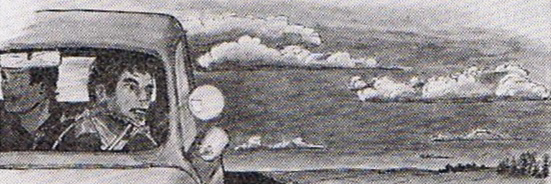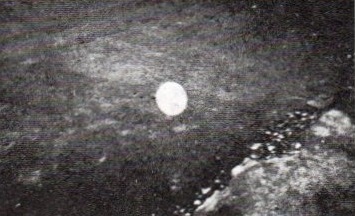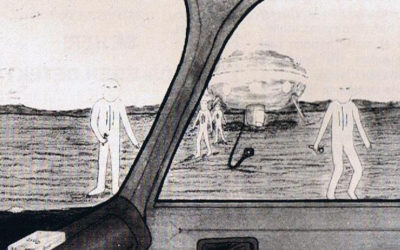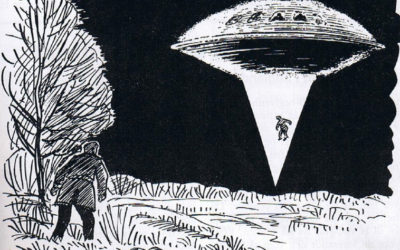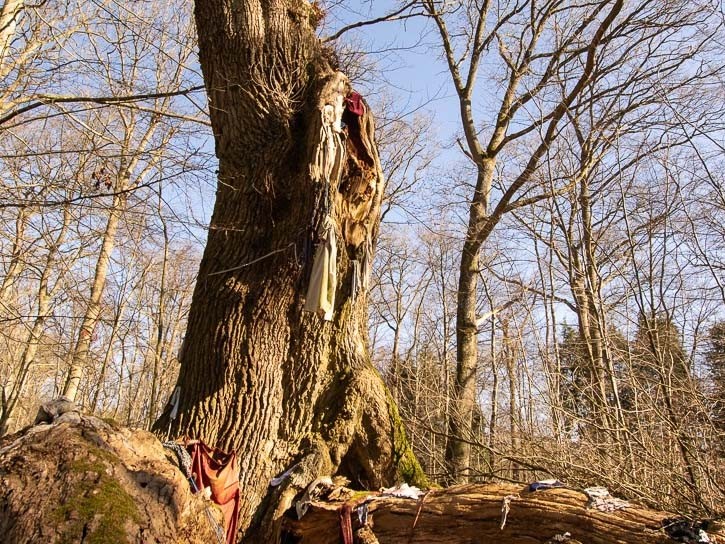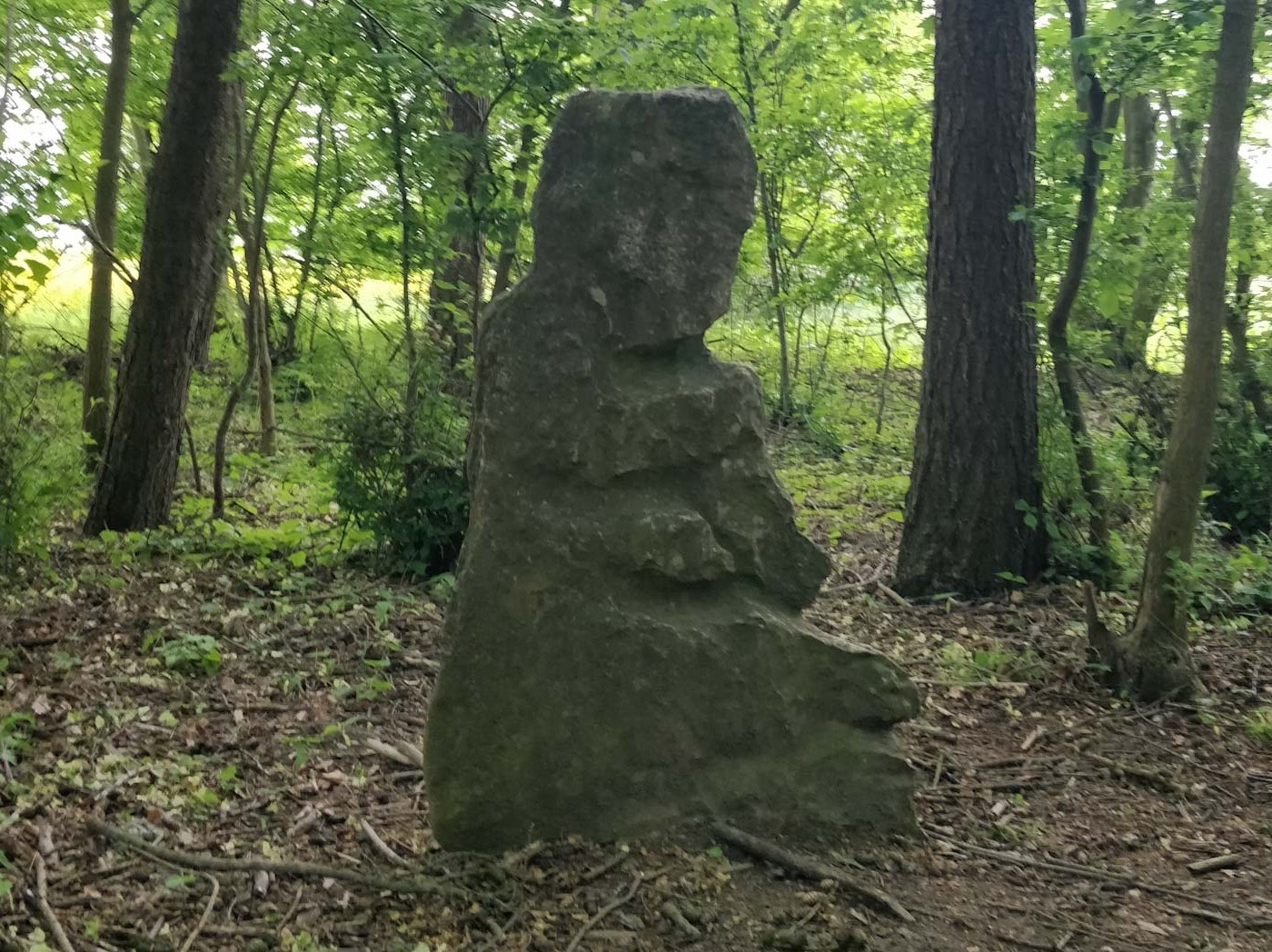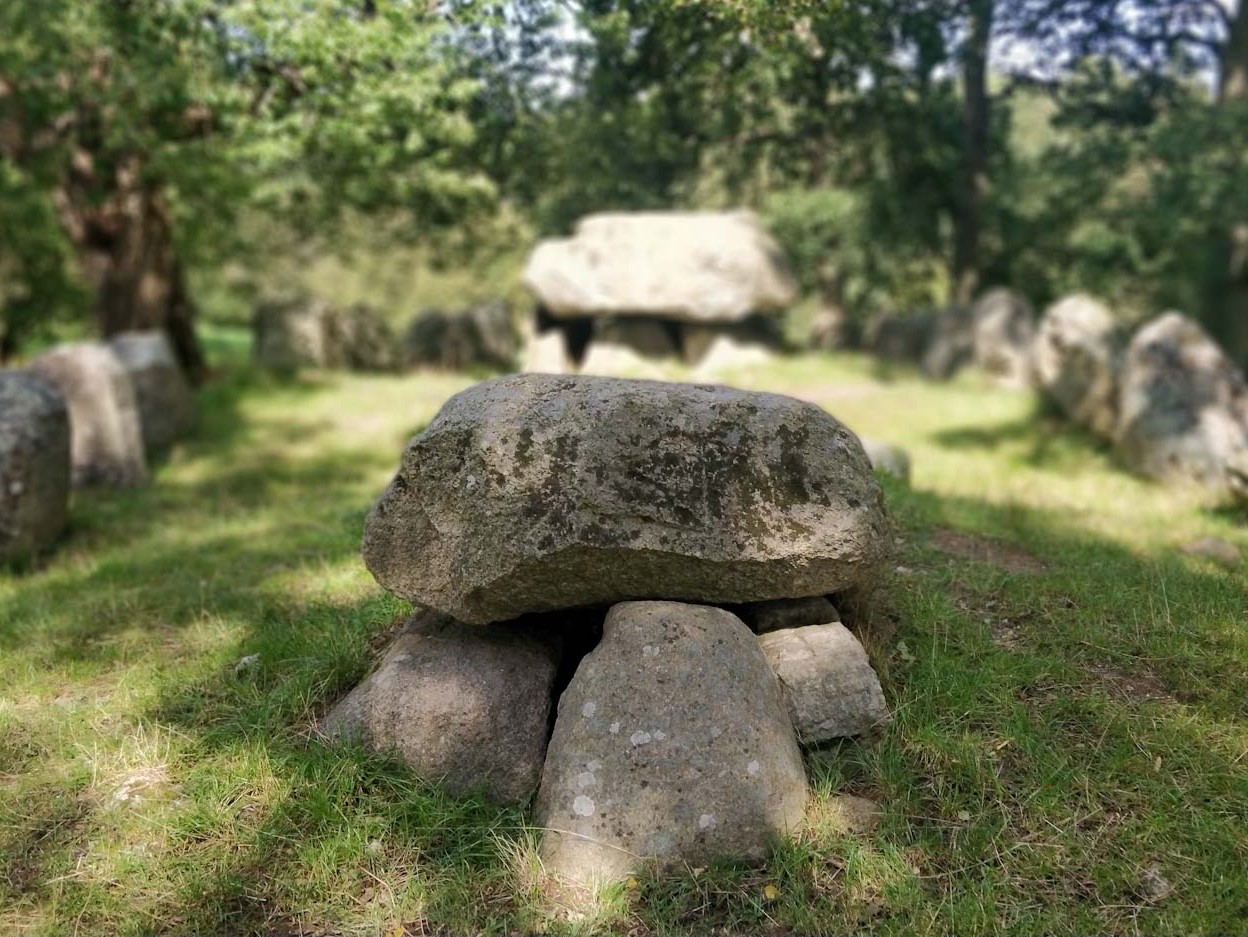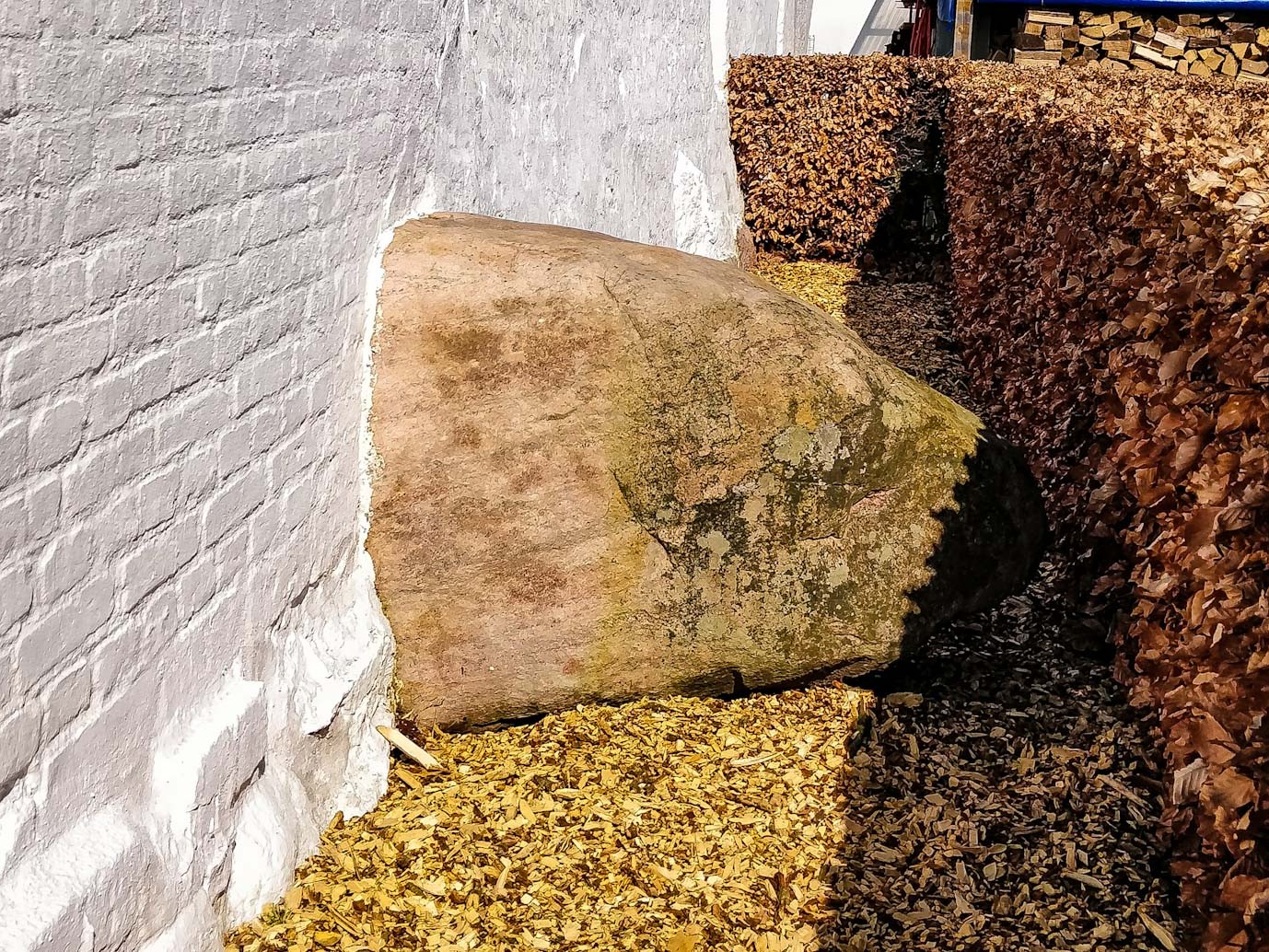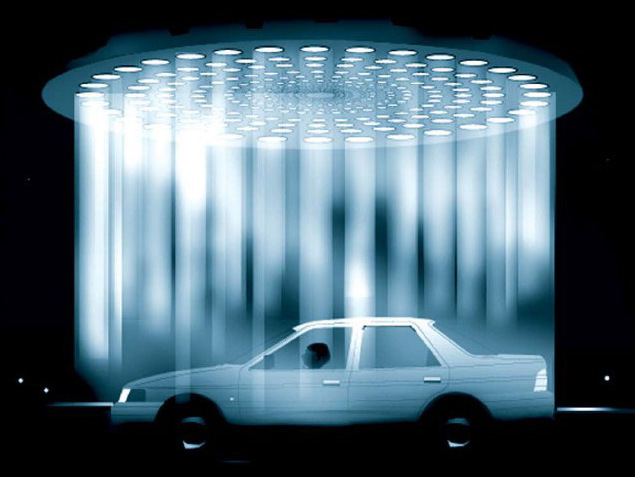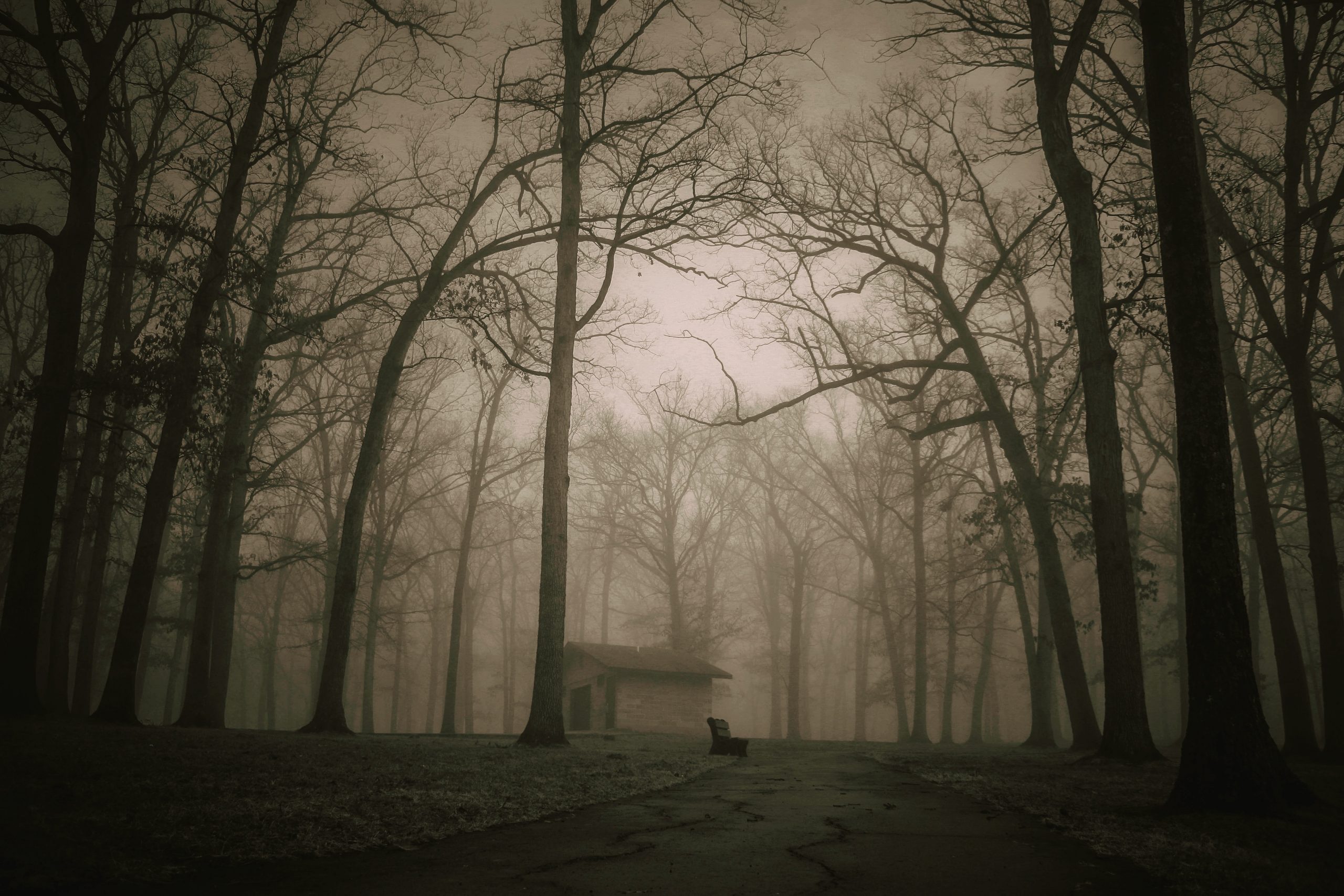By Thomas Brisson Jørgensen & Simon Hesselager Johansen
Soap Bubble Fever or An Invasion of Telemeter Discs?
Seemingly sentient soap bubbles are among the more curious elements of an already highly strange UFO phenomenon. They have been surprisingly common in Danish UFO reports, with several clusters as well as sporadic sightings over the years. While “soap bubble UFO’s” are definetely not unheard of outside of Denmark, they do seem to have featured particularly prominently here, for some reason – especially during the 1960’s and ’70’s.
What witnesses consistently reported during this period, were: floating, transparent/semi-transparent spheres, usually in the size range of a tennis ball and upwards, apparently moving by their own intelligence, often against the wind, while navigating obstacles gracefully. In many cases the bubbles disappeared into the sky with great speed. Sometimes, more than one of these bubbles were observed by the same witness.
Danish reports of soap bubble UFO’s do however, in many cases, reveal a clear confirmation bias. This is due to the fact that many prominent ufologists in the 1960’s were part of the larger movement surrounding Polish-American contactee George Adamski. Borrowing from his terminology, they would classify these objects as so-called “telemeter discs”. According to Adamski, telemeter discs were remote controlled surveillance probes that extraterrestrial “space brothers” operated from motherships orbiting the earth. This is a good example of how Adamski’s followers often were forced to assign the more erratic UFO sightings into ill-fitting, pre-existing categories
Adamski with a painting of his most famous space brother, Orthon.
Several Danish ufologists have also claimed soap bubble encounters of their own. H. C. Petersen, founder of SUFOI (Scandinavian UFO Information) and later the Danish branch of IGAP (International Get Acquainted Program) and one of the worlds most outspoken proponents of the Adamski School, had one in 1965. Here he tried to establish mental communication with not only one, but two of these objects, in the belief that they were telemeter discs. The following year Ensio Slej, another early Danish ufologist who subscribed to Adamski’s teachings, had an encounter with a soap bubble UFO in the center of Copenhagen. He too tried to establish a mental link, and from his description it seems he succeeded in drawing the bubble towards him. More skeptical minded people have also reported encounters with these curious bubbles. One example is the Danish author of non-fiction books about UFO’s and the paranormal, Jens Laigaard, who had a sighting of one when he was a child.
A chronology of Danish soap bubble cases
The following is a chronological list of the Danish cases we know of, involving flying, soap bubble-like phenomena.
April 24, 1959. Just before 16:00 hrs, a makeshift UFO detector, installed by the owner of a manor in the South of Zealand, started buzzing. A couple minutes later, two of the people living in the manor saw a spherical UFO travel across the sky for approximately 20 seconds. One of the two witnesses described the UFO as a metallic, shining sphere, but the other said it resembled a soap bubble with a solid core.
August 19, 1962. a Mr. F. Aabin was on holiday in Skælskør when he from Vestergade approx. at 11.00 noon, saw a round, bluish object high up between the clouds. The object most of all had the character of a soap bubble and, according to the witness, was certainly not a balloon. It was the size of a pinhead, measured by outstretched arm.
January 29, 1963. Christian Lynggaard snapped three photos of a “soap bubble” in different stages of transition. On the first photo, the object had just moved in from the left at a distance of 4 meters.
In the second photo, the object has turned milky white and started to pulsate while having moved within a distance of one meter of Lynggaard.
Finally, the object again became transparent and resumed its original trajectory near the building
May 4, 1963. From Herning, a witness giving his name as “Mr. M. B.” saw a soap bubble-like object, 10 cm in diameter, move across the sky about 100 meters away. It happened some time between 16:00 and 17:00. M. B. reported the soap bubble keeping a steady trajectory and flying against the wind, despite it blowing heavily outside. The object passed the witness at about a 5 meter distance, 3 meters above the ground, and at a speed that the witness estimated to be about 8 km/hr.
June 22 or 23, 1965. In the late afternoon prominent ufologist H. C. Petersen was writing on an article, when he felt a sudden urge to look out of the window. About 200 meters away he saw what at first looked like a lump of dandelion down carried by the wind. When looking through his binoculars, however, Petersen saw that it was a solid, soap bubble-like object, that he determined to be the size of a tennis ball. It was about 20 meters above the ground and moving effortlessly from south towards north at about 30 km/hr, despite a western wind blowing about 6 knots. After a minute, the UFO rose to a flight altitude of 50 (in another article he claimed it to be 100-200) meters and flew towards the nearby Værløse Airfield. 20-30 seconds after the soap bubble disappeared, another one appeared looking exactly like the first one, travelling the same course. He and his wife also tried to communicate mentally with the objects, but to no avail.
In his original account, Petersen mentioned that he subsequently paid a visit to the only house in reasonable distance from where the objects had flown. The residents here had stated that they had seen nothing and that they had not been blowing soap bubbles. In a later account, Petersen said that the first soap bubble disappeared between some fighter jets, and the second disappeared while moving against the wind.
Some time during the mid 1960’s a member of BUFOC (Bornholms UFO Club), Tom Pedersen, was walking on Frederikssundsvej in Brønshøj, when he noticed what at first looked like a regular soap bubble resting up against a building wall. Almost immediately afterwards, it flew over his head and down the street, where it disappeared after about half a minute. Pedersen later wrote about his experience to the aformentioned H.C. Petersen, who replied that “the telemeter disc definetely “was there because he was” and hinted that it might have been collecting data of some kind. We do not know whether this sighting succeded or preceded H.C. Petersen’s sighting from Værløse.
Summer, 1966. Police Detective and UFO enthusiast Ensio Slej was walking along Gl. Strand in Central Copenhagen, in the direction of the town hall. The weather was clear and free of clouds, but a bit windy. Slej was just past the parliament building when he saw what looked like a soap bubble the size of a tennis ball, about 3 meters above street level. It was split along the middle with a clear line of demarcation, one half being bluish but transparent, the other looking like it was filled with smoke. It flew over the canal towards a parked car, and disappeared underneath it. Slej continued walking for a while, when the oddity of the sighting struck him: this was no ordinary soap bubble. It was too large, and strange looking. Also it seemed out of place. He then thought to himself, it might be a telemeter disc. He slowed his pace and started to mentally project: “if you are a soap bubble, then you will be gone by now. But if you are a telemeter disc, then fly towards me and stop in front of me so i can see you.” Slej then stopped and turned around, and saw the bubble coming towards him at ground level, stopping about 3 meters away from him and then ascending to eye level. Here it stayed motionless in the air, before flying towards another car. It started to glide along this car’s antenna before flying off, up between the tram line wires.
September, 1967. A woman from Falkonergårdsvej, Frederiksberg, who gave her name as only E. H, had trouble sleeping one beautiful moonlit night. She rose up from her bed at 23:00 and looked out the window. Here she saw a 30 cm wide object, that looked like a soap bubble, descending with lightning speed from the sky down to her garden. The soap bubble stopped and hovered near a large pear tree, approximately 8-9 meters from her window. E.H. could see the street lights reflect upon the surface of the object. After a couple minutes the bubble seemed to become more pear-like in its shape, and then disappeared. E.H. said she had no idea whether the bubble flew away or if it burst.
September 27, 1967. A man by the name F. M. Petersen was walking around in the garden of a house in Sædding, together with his younger brother. Suddenly they saw what they thought was a large soap bubble, about 10 cm in diameter, near the hedge. It flew horizontally across the lawn at the speed of the wind, 2 meters above the ground. Soon after another one appeared, following the same course as the previous one. The boys now tried to grab it, but just as they were within its reach it changed its course dramatically, going almost directly upwards into the sky until it was out of sight. The brothers did not find anyone nearby who could have been responsible for blowing soap bubbles.
From late 1967 we have another case from Frederikssundsvej, this time on the stretch of road between Husum and Herlev. A man was waiting for the bus, when at some point he looked to the sidewalk and saw what looked like a soap bubble, about 3 meters away. It came rolling towards him over the bicycle path, eventually coming to a standstill at his feet. It then made its way over the road while cars were driving back and forth, but instead of being hit and bursting, it ascended up into the air until it was at an altitude of 3-4 meters, then descending again when the road was clear. It repeated this act of evasion several times. The bubble eventually became still at about 1 meter above the ground, and stayed that way for about 5 seconds. Then it ascended up into the air, until it was out of sight. The witness was certain it could not have been a soap bubble, as soap bubbles tend to shine in different colors, while this was completely colorless in its transparency. Also the bubble had been completely unaffected by the wind during the whole thing.
Some time prior to May 1968. A member of the now defunct organization FUFOS (Frederiksberg UFO Studiekreds) was riding his moped, when he saw a whitish “something” fly past him. The object then returned and flew back towards him again, this time so slowly that he could get a better look at it. It looked like an almost completely transparent soap bubble. The bubble continued over his head until it reached the hedge of a garden, where it stood still for a moment while pulsating. Then, with an abrupt jump it ascended up towards the sky at a very high velocity. The entire observation lasted no longer than 20 seconds.
May, 1968. A resident of Åboulevarden, Copenhagen, named Knud, felt compelled to look out his corner apartment window facing the street Blågårdsgade. From here he saw what appeared to be a soap bubble, 12-14 centimeters in diameter, standing completely still in front of a cars headlights. The sighting lasted about 30 seconds, until the traffic light turned green and the cars started driving. At this point the bubble immediately ascended and hovered above the driving cars for a short while, before disappearing at a speed that the witness estimated to be approximately 40 km/h.
July, 1968. From his summer residence in Tamdrup Beach (east of Haderslev) Gunnar Stoltenborg observed a soundless, transparent sphere 30 meters away, hovering near a line of trees. He described it as looking pretty much like a large soap bubble. After a while it ascended, until it could no longer be seen. The sighting happened at the same time as a larger triangle-shaped UFO was observed relatively nearby. The witness felt that there must have been a connection between the two, and that the soap bubble was perhaps a sort of reconnaissance device (i.e. a telemeter disc)
Late July, 1970. Newspapers began carrying a series of articles about a man who had come into possession of a small, spherical object. He had found it on the beach at Blokhus, on the west coast of Vendsyssel, while walking with his wife one day. Certain that that the object had fallen from the skies, he went to the local UFO organization, where it was determined that it was a telemeter disc. In several articles the object is called a soap bubble, but when reading the actual description of the object, it does not match other cases of clear-cut, soap bubble-like objects. This was much smaller, and very different in character. Nevertheless this underlines the widespread tendency to equate the notion of telemeter discs with soap bubbles, now also in the press.
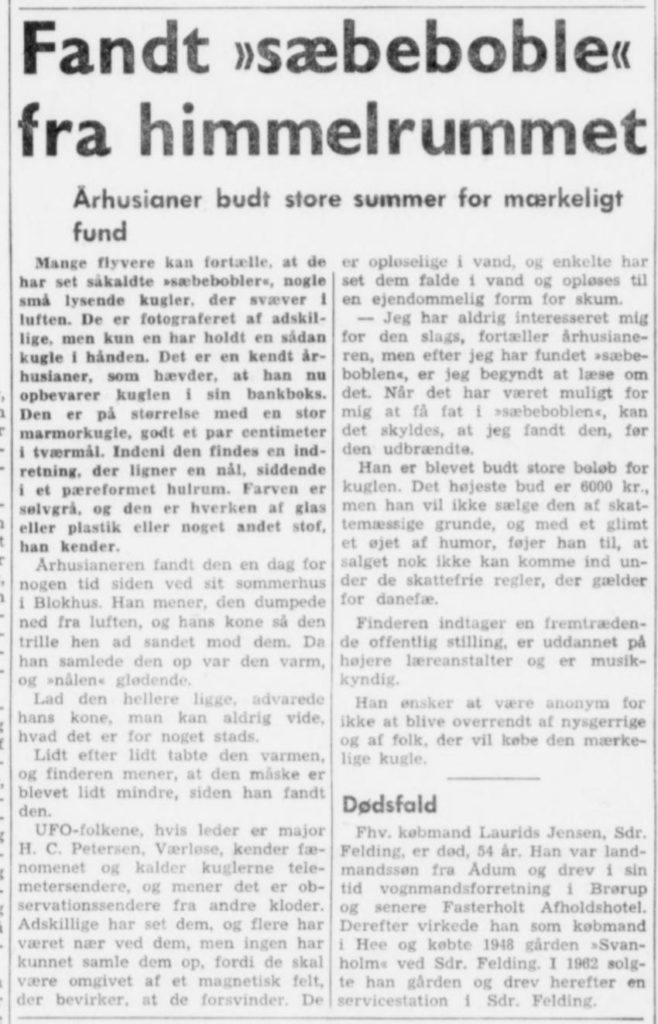
Article about the Blokhus object from Silkeborg Avis (August 1., 1970)
April, 1971. One day at around 10.00 in the morning, a farmer named Arne Skjoldmose was harrowing his field near Sørbymagle in western Zealand, when a soap bubble-like object caught his attention. It appeared about 50 meters from his tractor, moving at a very slow but jagged pace along the ground. It struck Skjoldmose that it was moving directly against the wind. The object continued until it was only 5 meters from him, when it suddenly elevated itself about to about 2 or 3 meters and continued horizontally in the direction of the tractor. The astonished farmer opened the tractor door to look as it was passing above him, so close that he could almost have touched it. When it had passed the tractor, it descended to its original distance off the ground and continued along. Up close, he saw that the object was the size of a tennis ball, mattish grey or milky white with a slight transparency, and so akin to a soap bubble that he was expecting it to burst at any moment. No sound came from the object. Skjoldmoses sighting was from 1971, but came out in 1974 at a time of massive UFO reporting from this area of Denmark. Newspapers made mention of the concept of telemeter discs in relation to the sighting and also printed an account of another observation Skjoldmose had, years earlier.
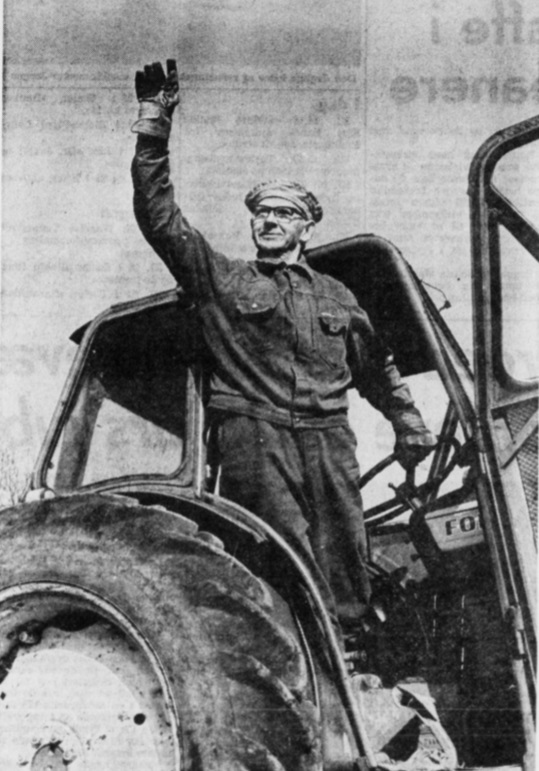
Farmer Arne Skjoldmose in his tractor, demonstrating the altitude of the soap bubble when it flew past him.
November 26, 1973. At about 00:45 hrs, an observer on Guldbergsgade in Copenhagen reported four glowing, round objects flying from the southwest at 60 degrees height over the horizon. The observer described the objects as having a blue glow to them and resembling soap bubbles, or being like polished steel. These objects were flying in a square formation and each were about the size of a to-krone (a now defunct coin) held at arm’s length, telling us that they were quite a lot larger than the average soap bubble. The witness described them as completely silent.
August 15, 1979. At around 7.00 in the morning, a man named Preben Høgberg was driving in his Fiat 600 from Copenhagen to Jægerspris, along with three passengers. Høgberg suddenly saw a soap bubble in the lower left corner of the car windshield. The weather was very windy, and he was driving on open terrain with no pedestrians to be seen anywhere, so Høgberg wondered where the soap bubble had come from. He asked the passengers if they had seen it, but they reacted as if he was crazy. Høgberg described the object as a glowing transparent/purple-ish sphere, 10 cm in diameter. The observation only lasted about 3-4 seconds.
Some time during the 1970s. Later-to-be author of UFO and paranormal books, Jens Laigaard, observed a Soap Bubble-like object when he was 12 years old. Laigaard talked about the episode to a newspaper in 1990, but did not give any specific details.
Commentary
If we look objectively at the above cases, and the 20-year framework they have been reported within, then we can note a few patterns and consistent details that are worth highlighting.
We can start by roughly dividing the cases into the following two categories:
1) Observations involving “key observers” who clearly believed that the objects they saw were telemeter discs, and who did not hide this belief.
2) Observations involving (apparently) more random observers who did not have – or at least did not express – any specific views on what the objects might be.
Of course, we can not be quite sure about the boundaries of this distribution. But we can see that the first soap bubble UFO observations take place many years before the coupling with telemeter discs, so there is no doubt about what came first. It was not until the mid-1960s that H.C. Petersen began categorizing soap bubble objects as telemeter discs, and even had his own observation, that we begin seeing cases involving ufologists and other spaceship-believing individuals.
In terms of content, we can also with reasonable certainty conclude that there are some of the observations that do not involve the same type of phenomenon that we see in the “pure” soap bubble close encounter cases. In fact, we can not even really put all of these in a common “other” category, as they each are completely different too. They are nevertheless included in our chronology because the witnesses themselves made an association with soap bubbles, and in order to trace the aforementioned development of the juxtaposition between soap bubbles and telemeter discs in the ufological discourse. In addition, several of these “divergent cases” are very difficult to assess, as they often deal with objects seen from a long distance. Distance assessment, even with clear frames of reference, is always based on estimates from witnesses, and in general we humans do not have the sensory apparatus to make particularly good judgments in that area. Furthermore, it is very difficult to imagine that one can come up with correct, detailed descriptions, of objects at such a long distance. Therefore, these cases must be taken with some reservation.
As for the close contact cases, it is a completely different story. Here we get a clear sense that the witnesses have observed the same phenomenon. It is really interesting how many of the same “behavior patterns” recur in the different observations, especially in terms of movement, reaction and the way the bubbles disappear. On the other hand, there is a difference in the sizes of the objects from case to case, where the smallest are referred to as in the vicinity of a tennis ball, and the largest as a whopping 30 cm in diameter. But this speaks neither for nor against the bubbles as, respectively, naturally occuring phenomena or artificially constructed objects.
There are several of the cases that one could easily write off as wishful thinking, or perhaps even fabricated. The idea of overgrown soap bubbles as being extraterrestrial drones, with which one can even establish telepathic contact, seems really bizarre and helps to give many of the cases more than a tinge of naivety. Maybe that’s why they have not been the subject of serious study here by ufologists. Another good reason could be that they seem to have disappeared again by the end of the 1970s. In any case, soap bubbles are no longer mentioned in UFO reports after that time. And since actual soap bubbles are still reasonably well-known and widespread, the frame of reference should still be an obvious one to make.
If you put on the Adamski glasses, it could perhaps be argued that the soap bubbles have long since been “upgraded” and now belong in the pile of discontinued telemeter disc models. But if one leans toward them being a natural phenomenon, then why are they no longer reported? One possibility is that there are some circumstances for their physical creation that are no longer present. But what exactly these should be is hard to say, since we do not know what they bubbles are to begin with. People like Trevor James Constable and Ivan T. Sanderson once argued for the possibility that some UFOs could be a kind of organic, self-conscious organism that has not yet been discovered by science. It is interesting to think about in the context of soap bubble cases, but it must – at least for now – remain speculation.
Sources
- Willy Wegner – UFO-Landinger i Danmark (FUFOS, 1978)
- Willy Wegner – UFO’er Over Danmark: 1965-1990 (Sphinx, 1990)
- Magazines: Bornholms UFO Club # 6 (1975), UFO-Aspekt #3 (1980) & UFO-Aspekt Jule-Special (1968), UFO-Nyt #6 (1959), #10 (1963) #5 (1964), #4 (1965), #6 (1967) #2 & 5 (1968), and #1 & 5 (1974)
- Newspapers: Jydske Tidende, July 20 (1968), Vendsyssel Tidende, July 25 (1970), Silkeborg Avis, August 1 (1970), Sjællands Tidende, March 30 (1974) & Århus Stiftstidende, July 24 (1990)
Tags
I samme kategori…
The Gyldenholm Landing
One night in April, 1960, a man allegedly had a rare close encounter of the third kind with a landed flying saucer and its crew, near the estate known as Gyldenholm
The Sjællands Odde CE3
On a January day in 1967, some boys out playing near their house in the village of Overby would experience one of the most puzzling close encounters in Danish UFO history
The Åmosen Incident
One night in Maj of 1975 a young man had an unexpected encounter with a UFO and its occupants near Åmosen, Western Zealand

